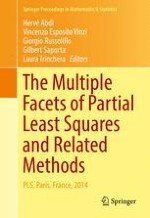2016 | OriginalPaper | Buchkapitel
7. PLS and Functional Neuroimaging: Bias and Detection Power Across Different Resampling Schemes
verfasst von : Nathan Churchill, Babak Afshin-Pour, Stephen Strother
Erschienen in: The Multiple Facets of Partial Least Squares and Related Methods
Aktivieren Sie unsere intelligente Suche, um passende Fachinhalte oder Patente zu finden.
Wählen Sie Textabschnitte aus um mit Künstlicher Intelligenz passenden Patente zu finden. powered by
Markieren Sie Textabschnitte, um KI-gestützt weitere passende Inhalte zu finden. powered by
